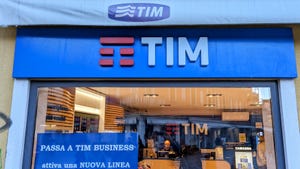eSIM and IoT: Q&A with Alexey GabsataroveSIM and IoT: Q&A with Alexey Gabsatarov
For Network Operators and especially MVNO’s, eSIM also brings unique benefits.
April 3, 2020

Telecoms.com periodically invites expert third parties to share their views on the industry’s most pressing issues. In this piece Alexey Gabsatarov,Head of Business Development, Europe at Soracom Corporation Ltd, took the time to take part in this exclusive interview with the MVNOs Series on eSIM and IoT.
Where does eSIM fit into the IoT market?
Cellular GSM connectivity represents a fundamental enabling technology for the IoT market. Obviously, there are other wireless standards that serve specialized cases, but cellular has really emerged as the leading solution for connecting devices to the cloud. There are a number of reasons for this – like ubiquitous coverage, global reach, better and better energy efficiency (especially with recent developments in Cat-M and NB-IoT), and especially overall security.
Robust security is vital for all IoT projects. Cellular offers encrypted transmission between the device and the network, along with the ability to shield the device from the internet entirely. For over 25 years, cellular connectivity relied on removable SIM cards for authenticating devices to the network. eSIM essentially permanently embeds that card inside the device while providing an equivalent level of security. eSIM already is a fundamentally important technology for IoT and Consumer markets. In fact, around 50% of all devices we connect already have an eSIM.
What benefits does it bring?
This new form factor brings numerous benefits for device makers. With eSIM, devices can now be much smaller, tolerate harsher environments (temperature and vibrations) and since no SIM slot is required, devices can be made completely airtight. Since the eSIM is designed to host multiple subscriptions, IoT service operators may choose to use multiple networks subscriptions with e.g. different coverage, cost or quality.
For Network Operators and especially MVNO’s, eSIM also brings unique benefits. Since there’s no need to distribute physical cards, Operators can simplify supply chains and reduce distribution costs. With eSIM, Operators can build fully digital e-commerce processes to service more use cases without having to rely on retail presence.
How is eSIM shaping this new world of connected devices?
Consumers are increasingly interacting with apps and web sites provided by Network Operators to find and manage connectivity products. eSIM is a critical component to enable this connectivity-in-an-app approach consumers expect from modern services.
At the same time consumer connectivity is often seen as a component of a bundled offering with partnerships spanning much more than the usual broadband, TV, Mobile combo. For example, travellers can purchase an option to be connected on arrival with their airline ticket.
We also see a strong demand for eSIM based connectivity in IoT projects. Many device makers making the switch to the eSIM form factor, and we expect this trend to accelerate in the coming years as eSIM become more readily available, more affordable, and more familiar to hardware designers and manufacturers. eSIM is essential for many IoT projects at scale since it simplifies production and logistics. As an example, we’d expect the majority of Smart City and Smart Infrastructure projects to use eSIM for scaling out.
Why does eSIM make sense for IoT device makers and the potential use cases?
eSIM makes sense for device makers for two primary reasons: improved physical characteristics of the eSIM chip over the removable eSIM and the ability to provision network credentials over the air.
eSIM comes in a variety of standard and proprietary form factors such as MFF2 and WLCSP. This offers great options for device makers who can pick a form factor most suitable for their device. In addition to that, GSMA is working on certifying solutions based on iSIM or Integrated eSIM which would not require a separate chip and will simplify it even further. In general, the current trend for digitalisation and miniaturisation will continue. Use cases that will benefit from this most immediately include wearables, where we have already seen cellular enabled completely sealed off rings as a prime example.
Being able to remotely provision network credentials is critical to delivering IoT at scale. With manufacturing becoming increasingly global, many IoT use cases benefit from a single SKU which can be provisioned with specific connectivity option once the device is deployed without opening or even accessing it.
Where does the MVNO fit into the picture?
Being able to offer products over a fully digital channel is a huge benefit for MVNOs since it’s generally less capital expensive than maintaining a network of retail stores. In addition, many MVNOs find eSIM useful for accessing new market channels, such as distributors and resellers. It’s also easier to offer connectivity bundled with partners’ products which further benefits MVNOs.
For those MVNOs active or expanding into IoT markets, being able to offer eSIM based connectivity is increasing becoming the must for many IoT use cases. With the number of connected devices expected to climb to 13.6 per person by 2022, Consumer IoT is definitely an interesting market for MVNOs to consider for future growth.
You are set to speak at MVNOs World Congress in September? What will your talk be about? Why are you attending?
I am going to speak at MVNOs World Congress in September regarding eSIM adoption. Based on my industry and regulatory experience I can provide insight into both consumer and IoT eSIM adoption, current challenges and new developments. And I am excited to join MVNO World Congress to share this insight and get into discussions with industry colleagues and learn about their experiences.
If you liked these insights from Alexi, make sure to catch her talk at MVNOs World Congress 2020 in Berlin, 1 – 4 September 2020.
Read more about:
DiscussionAbout the Author
You May Also Like










.png?width=300&auto=webp&quality=80&disable=upscale)


_1.jpg?width=300&auto=webp&quality=80&disable=upscale)